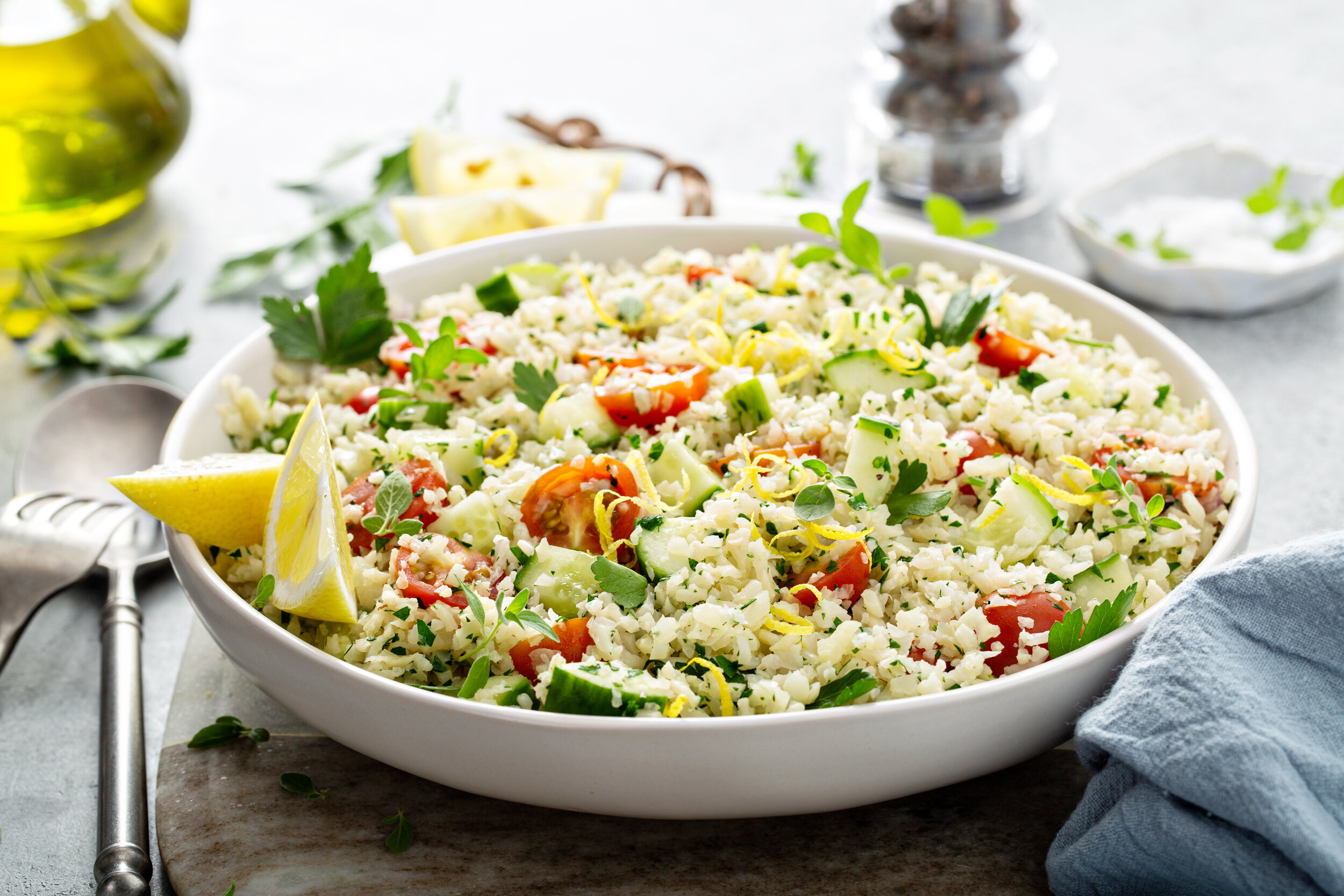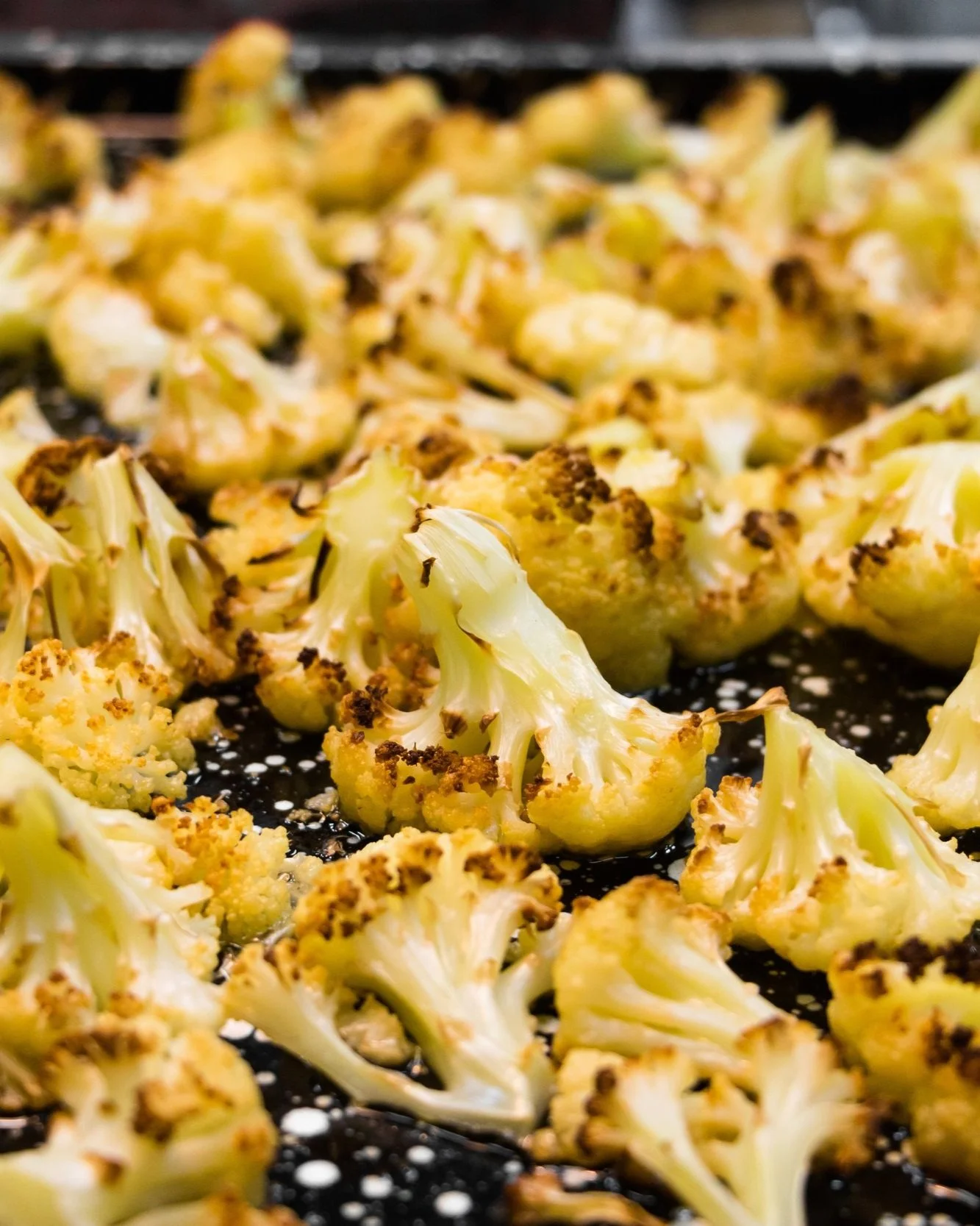Cauliflower Tabbouleh

Diet in the New Year
The bathroom scale doesn’t lie: It’s time to diet. I’m guessing some of you find yourself in a similar situation. With this in mind, for the next month or so, I will share my dieting tips and recipes. This is not my first major diet: When Dearest and I moved from Kansas City to Bozeman, I qualified as overweight by Bozeman’s uber-fit standards. Over six weeks, I lost 16 pounds and kept the weight off up until Robert’s death, 16 years later. The past three years, however, I’ve seen a steady creep up on the scale, with an alarming jump this past year. With Covid as an excuse for one more glass of wine, another helping of pasta, an extra dousing of olive oil, overindulging has resulted in my wardrobe choices shrinking as my body expands. I am down to one pair of jeans and sweatpants. Pathetic. For most of November and December, I considered dieting but immediately baked cookies or bread instead. If I felt particularly fat, I made soup—with cream in it. Well, it’s time to pay my dues.
Please note: I am neither a dietician nor a doctor. Before you diet, you need to understand your body’s composition and nutritional requirements. I am simply sharing my journey. I began mentally preparing for my diet a few weeks ago while being seduced by Facebook ads: Keto, Intermittent Fasting, South Beach, and more, all promising amazing, quick results with testimonials showing slenderized bodies. They also touted their delicious, easy-to-prepare meals, replete with mouthwatering photos. I clicked on ads and took their online quizzes. According to these ads, a real nutritionist would provide a customized diet tailored to my requirements. And then they asked for a credit card. In a single night, feeling dumpy and lonely, I bought into Keto, Intermittent Fasting, and Better Me, which is a diet and exercise combo, only to discover that the workouts are “under construction” and so far, don’t exist. Once the apps had my money and the programs became accessible, I acknowledged to myself that I had been suckered. Keto is simply not for me; I cannot live on fat bombs and be a petri dish, monitoring my pee to see if I am in ketosis. Intermittent Fasting was basically a waste of money as all I needed to know from them was to eat my meals between 9 a.m. and 6 p.m. and stick to 1,250 calories or less a day to shed pounds. The biggest scam is Better Me, which offers meals, that in my opinion, are simply disgusting.
I read through all the literature and dismissed adhering to the Keto, South Beach, Mediterranean, Adkins, or any other prescribed diet routine. Instead, I am using information gained, in bits and pieces, from them all, particularly the Intermittent Fasting materials. Namely, I will:
• Eat my meals between 9 a.m. and 6 p.m., which is easy to follow and effective as far as cutting down quantities of food.
• Have a protein-rich breakfast with the highest percentage of daily calories, lunch as the second highest calorie meal, and dinner as a light meal.
• Drink lots of water and up my salt intake.
My one rock-solid investment for dieting success is the Lose It app. I downloaded it in order to track calories and nutrients. The fact is, if you want to shed pounds, you need to eat fewer calories than your body burns in a day. If you want to eat more than the paltry few allowable for weight loss, then burn the extra calories with exercise. You can find out your daily caloric needs by going onto any number of diet sites and inputting your stats. I would maintain my current weight with 1,548 calories a day and no exercise beyond the normal walks. To lose a pound or more a week, I have to restrict myself to 1,250 calories a day. Since I am going for faster results, I am targeting 1,110 calories a day and exercises that burn 500 calories. Wish me luck.
A couple of tips
• Water: You are supposed to be drinking 100 ounces (12 cups) a day, which is not easy to picture or track. A foolproof method to ensure you drink this amount is to find a pitcher, fill it with 12 cups in the morning, keep a glass by it, and drink it throughout the day.
• Salt: When you are burning fat, reducing carbs, and drinking lots of water, you need more salt. Without it, you’ll get headaches.
• Lose It app: Yes, it costs money, but this app will greatly aid you in losing weight. You can track your daily food intake from every possible nutritional aspect, along with exercise and water intake. You can also compare foods to make better choices. I love coffee, but not black. It turns out that a tablespoon of heavy cream, at 52 calories and no carbs, is better for dieting that the 60 to 140 calorie range of almond, oat, or skim milk due to carbs and calories. Informed choices make better choices.
• Calorie counting: Figure out how many calories a day you can consume if you wish to lose weight. Break it down into proteins/carbs/fats as far as grams. Track everything you eat as everything has calories. Things you think have no carbs many times do (like artichokes!). Lose It will tell you from one meal to the next how many calories you have remaining, along with breaking it down between carbs/fats/protein.
• Measure: Keep measuring cups and spoons close handy to keep an accurate count of what you are eating.
• The obvious: Sorry, but alcohol, sugar, and starchy carbs like breads and pasta are not good for dieting. Maybe a small serving once a week, but unless you completely eliminate them, it’s easy for them to sabotage your efforts.
• Morning routine: Start your morning by drinking a glass of hot water with the juice from half a lemon and a quarter teaspoon of cayenne or chile powder. This gets your system revved up.
• Vegetables: Fill yourself up with green vegetables, which provide bulk and fiber. Generally, the greener the vegetable, the healthier and better choice for dieting. Monitor fats and oils when cooking or dressing veggies, as even a drop of oil adds calories. Lettuce wraps are an ideal diet.
• Have fun: This is a great opportunity to have fun with your meals and creativity. Experiment with preparing vegetables in new ways that don’t include fats. Come up with condiments that add a splash of flavor and spice things up. Be happy with yourself for having the discipline and desire to get in shape. The New Year brings new momentum; it’s time to reclaim your health.
Here is a delicious, low-calorie recipe for either lunch or dinner. It can be served alongside grilled chicken or fish or a lettuce wrap with tuna salad. It is also wonderful on its own.
Cauliflower Tabbouleh
Serves 4 as a side, 2 as a main course
324 calories for entire dish
1 cup cauliflower (about ¼ of a medium head)
¼ red onion, finely diced
½ cucumber, peeled and finely chopped
10 cherry tomatoes, quartered
1 cup finely minced Italian parsley
10 Marcona almonds, cut into thirds
Dressing
1 clove garlic, finely minced
3 tablespoons lemon juice
2 tablespoons olive oil
½ teaspoon salt
½ teaspoon sumac (can be omitted but it adds flavor)
Quarter a cauliflower. Remove the stem from one quarter and reserve the remaining cauliflower for another use. Cut and trim cauliflower until you have bean-size “flower” pieces. Bring a pot of water to boil, then add 2 teaspoons salt and the cauliflower. Boil for 2 minutes, drain and rinse with cold water. Set aside to continue draining.
Make the dressing by combining all ingredients in a small bowl. It will be tart but keep in mind that parsley negates the tartness.
Place all salad ingredients in a bowl, toss with dressing, cover, and let sit at least a half hour so flavors meld.
Note
• The dressing will not be absorbed, so drain it when serving. (This lowers the calorie content.)
• Covered, the cauliflower tabbouleh will keep overnight in the refrigerator and makes a satisfying lunch.
Title Photo: © fahrwasser
Sally Uhlmann’s passion for cooking led her to publish a memoir-style cookbook, “Just Cook with Sally.” She splits her time between the States and her farmhouse in Cortona, Italy, when she is not traveling the world. Sally cooks, develops recipes, and writes stories—mostly about the intersection of food, travel, and her life.





